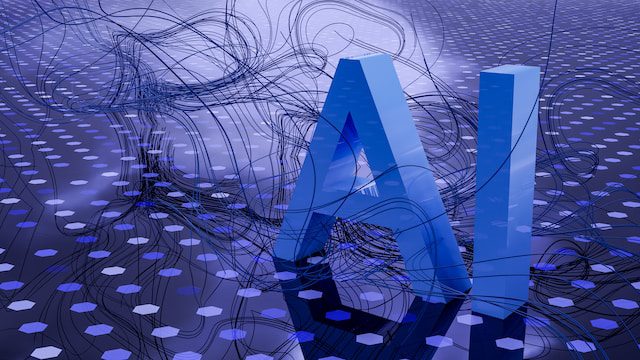Introduction
Defining Self-Learning AI
Man-made consciousness (computer based intelligence) has taken incredible steps, with Self-Learning artificial intelligence arising as perhaps of the most noteworthy headway. Self-Learning man-made intelligence alludes to a sort of computerized reasoning (artificial intelligence) which adjusts and develops itself without express programming – not at all like conventional man-made intelligence which keeps severe foreordained guidelines; Self-Gaining computer based intelligence gains as a matter of fact and information all things considered – making it genuinely progressive innovation.
Evolution of AI and Self-Learning Systems
The journey of AI began with basic rule-based systems, but over time, it has evolved into more sophisticated Self-Learning AI systems. Early AI models lacked the ability to adapt, but with the advent of Machine Learning, AI started learning from data. The emergence of Neural Networks and advanced algorithms paved the way for Self-Learning AI, taking the technology to new heights.
Importance of Self-Learning AI in Today’s World
In today’s rapidly changing world, where data is abundant and complexities are increasing, Self-Learning AI is indispensable. It empowers AI systems to continually improve and optimize their performance, making them more efficient, accurate, and capable of handling real-world challenges effectively.

How Self-Learning AI Works
Machine Learning vs. Self-Learning AI
Machine Learning is an AI subfield where algorithms use data to form predictions or make decisions based on what they learn from it. It takes this concept a step further by enabling algorithms to continuously learn in dynamic environments without human interference, providing adaptive and continuous solutions.
Neural Networks and Self-Learning Algorithms
Neural Networks are at the core of Self-Learning AI systems. They mimic the human brain, comprising interconnected nodes that process and learn from data. These networks enable Self-Learning AI to recognize patterns, perform complex tasks, and improve their accuracy over time.
Reinforcement Learning and Self-Improvement
Reinforcement Learning is a crucial aspect of Self-Learning AI, where the system learns through trial and error. It receives feedback from its actions and adjusts its behavior to achieve better outcomes. This process of continuous self-improvement makes Self-Learning AI exceptionally versatile and adaptable.
Advancements
Profound Learning and its Effect on Self-Learning
Profound Learning is a subset of AI that uses complex brain organizations to deal with tremendous measures of information and concentrate significant examples. It has been a unique advantage for Self-Learning man-made intelligence, empowering it to deal with complex undertakings like picture and discourse acknowledgment with exceptional exactness.
Transfer Learning: Adapting Knowledge to New Situations
Transfer Learning allows Self-Learning AI to leverage knowledge gained from one task or domain and apply it to another. This efficiency in knowledge transfer expedites learning in new situations and helps AI systems perform better with limited data.
Unsupervised Learning and Discovering Patterns
Unsupervised Learning is a type of Machine Learning where the AI system learns from unlabelled data, identifying patterns and structures on its own. This capability is essential for Self-Learning AI to explore and understand data without human intervention, making it more autonomous and versatile.
Applications of Self-Learning AI
Self-Driving Cars: Navigating the Roads Autonomously
Self-Driving Cars are a prime example of how Self-Learning AI is transforming industries. These vehicles use advanced sensors and algorithms to learn from real-time data and navigate roads without human intervention, enhancing safety and efficiency on the streets.
Personalized Healthcare with AI Diagnosis and Treatment
In the field of healthcare, Self-Learning AI has shown tremendous potential in diagnosing diseases, analyzing medical images, and suggesting personalized treatment plans based on vast patient data. This not only improves medical outcomes but also reduces costs and enhances patient experiences.
Natural Language Processing and Conversational AI
Natural Language Processing (NLP) has made significant strides, thanks to Self-Learning AI. Today, AI-powered chatbots and virtual assistants can understand human language, learn from interactions, and provide more relevant and accurate responses, revolutionizing customer support and user experiences.
Ethics and Challenges
Bias and Fairness in AI Decision-Making
One of the critical challenges of Self-Learning AI is ensuring that the algorithms do not inherit or perpetuate biases present in the training data. Addressing bias and ensuring fairness in AI decision-making is crucial to building ethical and responsible AI systems.
Ensuring Transparency and Explainability in AI
As Self-Learning AI becomes more complex, understanding how AI systems arrive at their decisions becomes challenging. Ensuring transparency and explainability in AI algorithms is vital to building trust with users and stakeholders.
Addressing Unintended Consequences and Risks
The continuous learning nature of Self-Learning AI can lead to unintended consequences and risks. Ensuring that AI systems have safeguards to mitigate potential risks is a critical aspect of responsible AI development.
Impact of Self-Learning AI on Industries
Revolutionizing Finance and Fintech
The finance industry benefits significantly from Self-Learning AI through fraud detection, risk assessment, and portfolio management. These AI-driven applications enhance efficiency and accuracy, driving innovation in the fintech sector.
Education: Transforming Learning and Skill Development
Self-Learning AI has the potential to personalize education and training programs, catering to individual needs and learning styles. It can identify knowledge gaps and recommend tailored learning paths, revolutionizing the way we acquire knowledge and skills.
AI in Manufacturing: Improving Efficiency and Quality
In manufacturing, Self-Learning AI optimizes production processes, predicts maintenance needs, and ensures product quality. This results in reduced downtime, cost savings, and improved overall efficiency.
Self-Learning AI in Entertainment and Gaming
Virtual Reality and Augmented Reality Experiences
Self-Learning AI enhances virtual and augmented reality experiences by analyzing user interactions and preferences to create more immersive and personalized content.
AI-Generated Content: Movies, Music, and Art
AI-generated content is on the rise, with Self-Learning AI creating music, art, and even assisting in movie scriptwriting. This fusion of AI and creativity opens new possibilities for the entertainment industry.
Enhancing Gaming with Adaptive Gameplay
Self-Learning AI in gaming creates dynamic and adaptive gameplay experiences, tailoring challenges and scenarios based on individual player skills and preferences.
The Future
Potential for General Artificial Intelligence (AGI)
As Self-Learning AI progresses, the possibility of achieving General Artificial Intelligence, where machines can perform any intellectual task that humans can, becomes increasingly plausible.
Merging Human and AI Intelligence
The future holds the promise of seamless integration between human intelligence and AI capabilities, allowing humans and AI to collaborate and complement each other’s strengths.
The Role of Self-Learning AI in Space Exploration
Self-Learning AI will play a crucial role in space exploration, assisting in autonomous decision-making during missions and processing vast amounts of data from distant planets and celestial bodies.
Implications for the Workforce and Job Market
Automation and the Changing Job Landscape
Self-Learning AI’s capacity for automation will impact various job sectors, potentially displacing certain roles while creating new ones focused on AI development and management.
Reskilling and Upskilling for the AI Era
Preparing the workforce for an AI-driven future involves reskilling and upskilling to meet the demands of emerging roles and to work alongside AI systems effectively.
Collaboration between Humans and AI
Human-computer based intelligence joint effort will be key later on work market, where people influence simulated intelligence capacities to expand their direction and critical thinking abilities.
Addressing Security and Privacy Concerns
Protecting Data in Self-Learning AI Systems
Robust data protection measures must be implemented to safeguard sensitive information as Self-Learning AI systems continually learn from and adapt to data.
Guarding Against AI-Powered Cybersecurity Threats
The same AI technology that enhances security can also be exploited by cybercriminals. Strengthening cybersecurity measures is essential to protect against AI-driven threats.
AI Ethics and Privacy Regulations
Regulations and ethical frameworks should be established to govern the responsible use of Self-Learning AI and protect the privacy and rights of individuals.
The Role of Governments and International Cooperation
Setting Standards and Regulations for AI
Governments play a crucial role in setting standards and regulations to ensure ethical AI development and usage.
Fostering Global Collaboration on AI Research
International cooperation in AI research promotes knowledge sharing, fosters innovation, and accelerates AI advancements for the benefit of humanity.
Addressing AI’s Impact on Geopolitics
The rise of Self-Learning AI has implications for geopolitics, as countries strive to lead in AI development and leverage its potential in various sectors.
Summary: Unleashing the Full Potential
Recap of Self-Learning AI system Advantages and Applications
Self-Learning AI’s adaptability, accuracy, and transformative applications across industries make it a revolutionary force in the AI landscape.
Envisioning a Future Powered by AI and Human Collaboration
The future holds immense promise as Self-Learning AI and human intelligence collaborate to tackle global challenges and drive innovation.
Embracing the Promise
Embracing Self-Learning AI responsibly and ethically will unlock its full potential, revolutionizing industries and improving the quality of life worldwide.
(FAQs)
What is Self-Learning AI, and how does it differ from Traditional AI?
Self-Learning AI refers to an AI subset that learns from experience and data without explicitly programming itself to improve its performance. Unlike traditional AI, Self-Learning AI adapts and evolves over time.
What are the real-world applications of Self-Learning AI?
Self-Learning AI has numerous uses, from autonomous driving cars to personalized healthcare, natural language processing and more.
How can we ensure the ethical and responsible use of Self-Learning AI?
Ensuring the ethical use of Self-Learning AI involves addressing biases, promoting transparency, and adhering to privacy regulations.
What challenges does Self-Learning AI pose for the workforce and job market?
Self-Learning AI’s automation capabilities may impact the job market, requiring reskilling and upskilling for new roles alongside AI systems.
How can individuals and organizations prepare for an AI-driven future?
Preparing for an AI-driven future involves investing in AI education, fostering human-AI collaboration, and embracing responsible AI development and usage.






